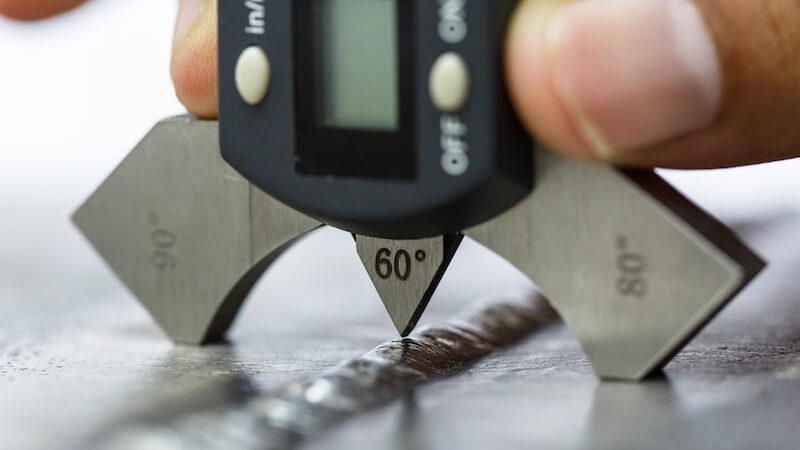A Comprehensive Overview to Recognizing Just How Welding Examination Functions: Strategies, Requirements, and Ideal Practices for Quality Control in Steel Construction
Understanding the details of welding evaluation is crucial for preserving the stability of steel manufacture. Carrying out ideal techniques can substantially boost high quality guarantee steps. The landscape of welding examination is not without its challenges.
Value of Welding Inspection
Although welding is an important process in different sectors, its integrity straight impacts the security and performance of components and structures. Reliable welding inspection is necessary for identifying problems that can compromise the quality and toughness of bonded joints. This process guarantees adherence to developed specifications and requirements, which are essential for maintaining structural stability and functional integrity.
Welding inspection serves multiple functions, consisting of validating that the welding procedure has been performed correctly, evaluating the high quality of products made use of, and validating that the finished item meets regulatory and industry standards (Houston Welding Inspection). With extensive assessment, possible concerns such as porosity, fractures, and incomplete combination can be spotted early, avoiding expensive repair services and alleviating safety and security threats
In addition, regular welding assessments foster confidence among stakeholders, including engineers, customers, and governing bodies, by showing a dedication to high quality assurance. The significance of welding inspection can not be overstated; it is important not just for conformity with lawful demands however additionally for boosting the general efficiency of welded structures. Ultimately, a robust welding examination program is a positive procedure that safeguards against failures, guaranteeing the durability and dependability of welded elements in their designated applications.
Typical Welding Inspection Techniques

Aesthetic assessment is the very first line of defense, permitting examiners to identify surface area flaws such as cracks, damages, or insufficient fusion. Radiographic screening uses X-rays or gamma rays to reveal inner defects, making it ideal for intricate welds. Ultrasonic testing employs high-frequency audio waves to spot subsurface defects, providing precise measurements of weld stability.
Magnetic particle screening works for ferromagnetic products, highlighting surface and near-surface discontinuities when bits are related to an electromagnetic field. Conversely, color penetrant testing utilizes a liquid dye to reveal surface-breaking flaws, ensuring that also the smallest flaws are spotted.
Each method has its restrictions and strengths, typically demanding a combination of approaches for comprehensive evaluation - Houston Welding Inspection. By using these evaluation strategies, quality assurance in steel fabrication is accomplished, making certain that welded structures meet safety and efficiency criteria
Industry Specifications for Welding

The American Welding Society (AWS) and the American National Criteria Institute (ANSI) are two famous companies that develop welding criteria. AWS D1.1, for instance, lays out the needs for welding steel frameworks, while AWS D1.2 concentrates on aluminum. Internationally, the ISO 3834 conventional addresses quality requirements for fusion welding, providing a framework applicable across national borders.

Ideal Practices for Top Quality Assurance
Quality assurance in welding is vital to achieving risk-free and durable buildings. Developing a thorough top quality monitoring system (QMS) customized to the particular welding project is necessary.
Routine training and certification of welding employees are vital for preserving a skilled workforce. Continual education on the most recent welding methods and technologies makes sure that inspectors and welders are experienced about present criteria and practices.
Additionally, performing pre-weld examinations to examine products and tools can protect against flaws before they occur. Houston Welding Inspection. Throughout the welding procedure, real-time surveillance and documents of welding parameters aid recognize inconsistencies instantly. Post-weld assessments need to include detailed examinations using non-destructive testing (NDT) methods to ensure the honesty of the welds
Moreover, preserving clear interaction amongst employee promotes a culture of quality. Regular audits and reviews of the welding process help recognize locations for renovation. By sticking to these best techniques, companies can attain optimal helpful hints high quality guarantee, eventually causing improved security and performance in metal manufacture tasks.
Difficulties in Welding Evaluation
Although welding evaluation is crucial for ensuring architectural honesty, it provides a variety of obstacles that can make complex the assessment procedure. One substantial difficulty is the variability in welding techniques and products utilized, which can affect the uniformity of weld quality. Different welders might utilize varying approaches, resulting in discrepancies that inspectors demand to assess and identify.
An additional difficulty entails the detection of defects. Non-destructive screening (NDT) techniques, such as ultrasonic and radiographic testing, can be complex and need experienced technicians to translate results precisely. False positives or downsides can occur, possibly resulting in expensive rework or compromised safety.
In addition, the presence of environmental variables, such click site as temperature and moisture, can influence the stability of welds and the performance of evaluation strategies. Examiners have to also browse the governing landscape, guaranteeing conformity with industry requirements, which can differ by territory and application.
Verdict
To conclude, welding examination plays a vital function in making certain the integrity and security of steel fabrication. Utilizing a selection of examination techniques, adhering to well established market standards, and implementing effective high quality monitoring techniques jointly enhance the dependability of bonded frameworks. Regardless of the challenges faced in the assessment procedure, a dedication to continual improvement and adherence to finest techniques can significantly bolster the high quality assurance structure, promoting better self-confidence amongst stakeholders in the welding sector.
Reliable welding inspection is important for determining flaws that can endanger the top quality and durability of welded joints.Furthermore, constant welding inspections foster self-confidence among stakeholders, consisting of engineers, customers, and regulatory bodies, by demonstrating a commitment to high quality assurance.The American Welding Society (AWS) and the American National Requirement Institute (ANSI) are 2 noticeable companies that develop welding requirements. During the welding process, real-time monitoring and documentation of welding parameters aid recognize incongruities quickly. Regardless of the difficulties dealt with in the evaluation process, a dedication to continual enhancement and adherence to finest practices can significantly strengthen the top quality assurance framework, cultivating better confidence among stakeholders in the welding sector.